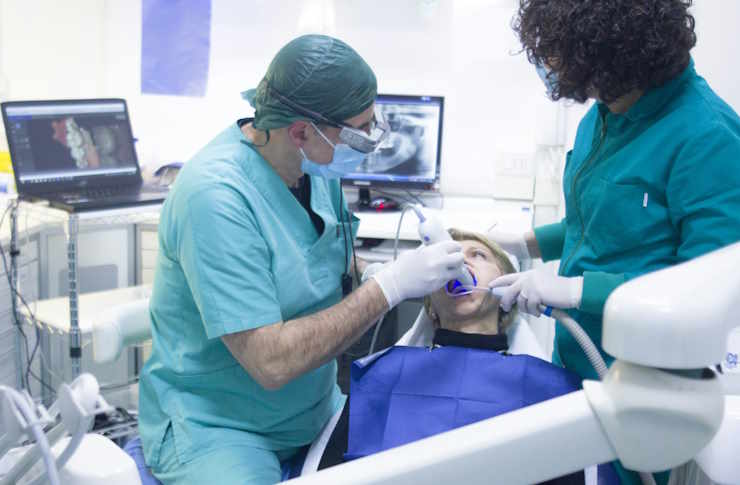Liposuction 101: Surgical Fat Removal & What to Expect
Liposuction targets stubborn pockets of fat to refine body shape rather than act as a primary weight-loss solution. This in-depth guide covers best treatment areas, safety and durability based on research, non-surgical alternatives, cost factors, and realistic recovery timelines to help you decide.

Liposuction is designed to remove localized fat deposits and improve body proportions, not to replace a comprehensive weight-loss plan. When performed by trained, board-certified surgeons, it eliminates excess fat cells from specific areas to enhance contours. Results can be long-lasting, but they depend on keeping a stable weight and following healthy lifestyle habits.
Typical areas treated
Surgeons frequently use liposuction to address places where diet and exercise often fall short. Commonly treated zones include:
- Abdomen and belly
- Thighs and hips
- Flanks and “love handles”
- Arms and upper back
- Chin and neck (submental region)
- Chest, especially for men with gynecomastia
These regions often show better contour refinement with targeted removal of fat cells than with general weight loss, which is why many patients choose liposuction to tackle persistent pockets.
What research and clinical experience show
Clinical studies and outcome reports generally demonstrate high satisfaction among patients when the procedure is carried out by experienced surgeons. Evidence indicates that the fat cells removed from a treated site do not typically return to that exact location. However, the remaining fat cells in the body can expand if a patient gains weight, so maintaining results commonly requires steady weight control through balanced nutrition and regular exercise.
Safety and outcomes are strongly linked to the clinician’s expertise, thoughtful patient selection, and adherence to perioperative protocols. Short-term effects frequently include swelling, bruising, and temporary numbness. More serious complications such as infection, contour irregularities, fluid collection, or adverse reactions to anesthesia are less common but possible. For these reasons, selecting a board-certified surgeon and closely following pre- and post-operative instructions are essential.
Surgical vs non-surgical options
Traditional liposuction remains the most effective method for significant volume removal and reshaping of body contours. Still, a growing array of non-invasive treatments appeals to people seeking less downtime and fewer procedural risks. Below is a side-by-side comparison of common approaches to help set expectations.
| Treatment Type | Method | Recovery Time | Results |
|---|---|---|---|
| Traditional Liposuction | Surgical suction-assisted extraction of fat | 1-2 weeks for initial recovery | Immediate contour change; generally permanent if weight is maintained |
| CoolSculpting | Non-invasive cryolipolysis (fat freezing) | Minimal to none | Gradual improvement over 2-3 months; best for small areas |
| Ultrasound Therapy | Focused or high-intensity ultrasound to disrupt fat cells | Little to no downtime | Requires multiple sessions; incremental results |
| Laser Lipo | Laser energy to liquefy fat before removal or to stimulate tightening | 2-3 days typical | Moderate contouring; may help with skin tightening |
Prices, rates, or cost estimates mentioned in this article are based on the latest available information but may change over time. Independent research is advised before making financial decisions.
Cost factors and budgeting
The price of liposuction varies based on location, size and number of treatment areas, the specific technique used, and the surgeon’s credentials. Typical ranges per treated area often fall between $2,000 and $8,000. Additional costs that can raise the final bill include:
- Facility or operating room fees
- Anesthesia or sedation charges
- Compression garments and dressings
- Prescription medications (pain control, antibiotics)
- Follow-up visits and, if needed, revision procedures
Insurance usually considers liposuction cosmetic, so coverage is rare unless there is a documented medical necessity. Many clinics offer financing or payment plans; during consultation, request a detailed itemized estimate and ask about any extra fees.
Preparing for the procedure and recovery expectations
A thorough preoperative consultation should review your medical history, current medications, realistic goals, and potential risks. Surgeons commonly recommend stopping blood-thinning medications and arranging for someone to help during the immediate recovery period.
Initial recovery generally lasts one to two weeks. Many patients resume sedentary work within about a week, while swelling and bruising are typically most pronounced in the first few days and gradually subside over weeks. Vigorous exercise and heavy lifting are usually discouraged for about 3-4 weeks, though light walking is encouraged soon after surgery to promote circulation. Final contour changes may continue to evolve over several months as residual swelling resolves and tissues settle.
Long-term appearance hinges on maintaining a healthy, stable weight. While the removed fat cells are unlikely to return to treated areas, weight gain can lead to increased fat in untreated regions or enlargement of remaining cells, which may alter the overall result. Some patients consider touch-ups or additional contouring after they have fully recovered.
Making an informed choice
Deciding on liposuction involves balancing expected outcomes with your health status and lifestyle. Seek consultations with board-certified plastic surgeons, examine before-and-after photos, inquire about complication rates, and ask about the surgeon’s experience with the specific technique you are considering. Get a written, itemized estimate and clear information about post-operative care and emergency protocols.
This article is for informational purposes only and should not be considered medical advice. Please consult a qualified healthcare professional for personalized guidance and treatment.






